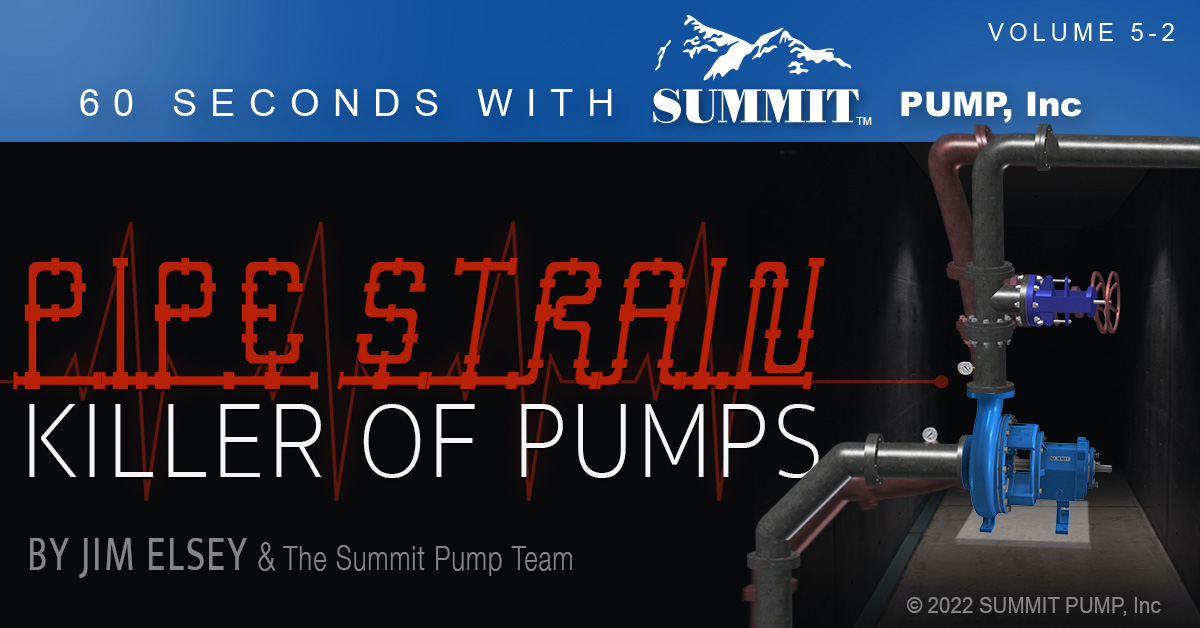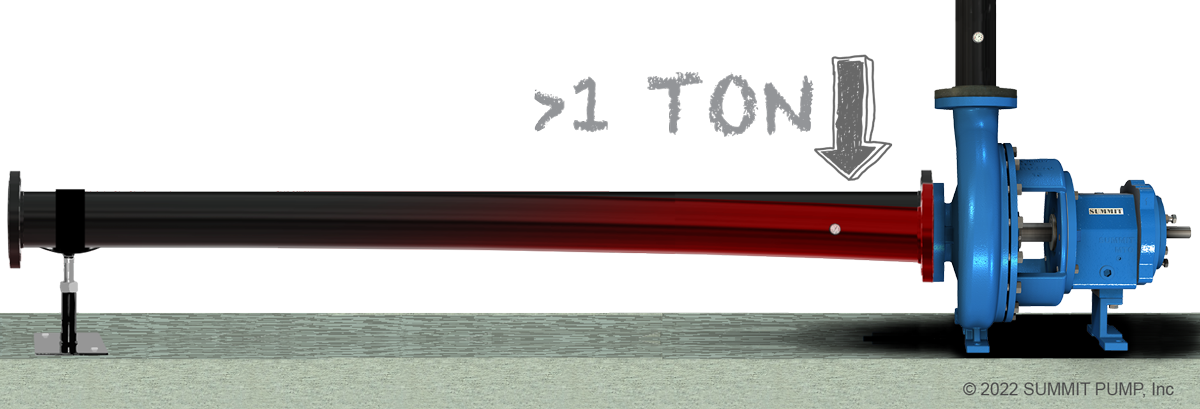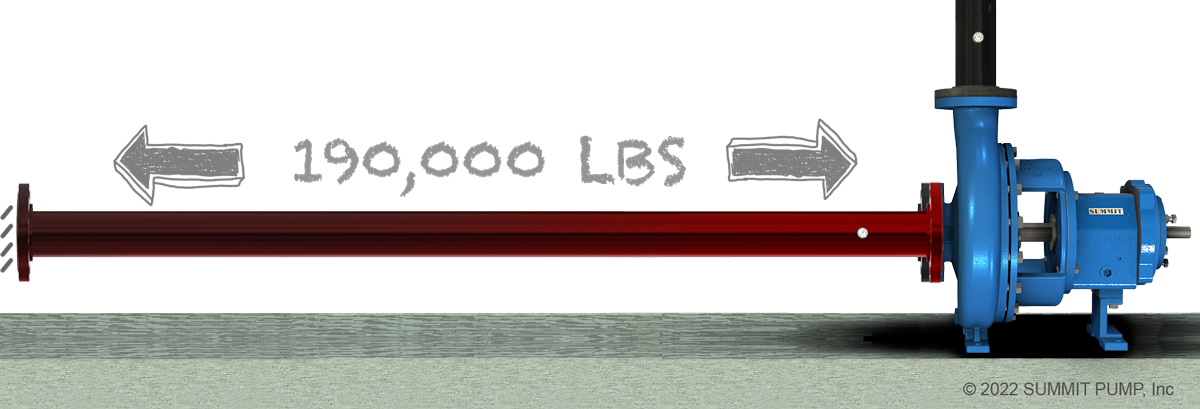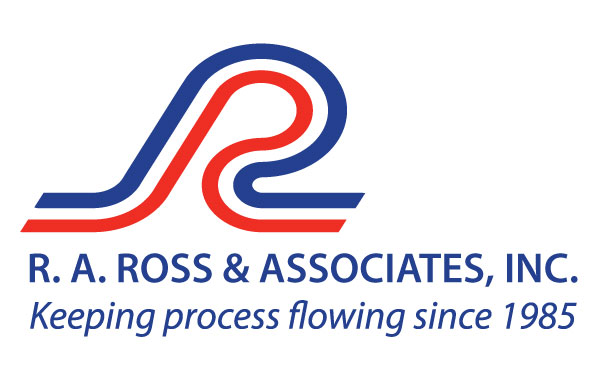 Imagine if you will…
Imagine if you will…
What Killed my Pump?
Ironically, after completing a list of best practices for your pump it will die a short time after you commission the system. Why? Because what you didn’t plan for was the elimination of simple pipe strain.
Pipe strain is the misalignment of suction and discharge piping in relation to the pump. Resulting forces are transferred into the pump, stressing internal components, degrading alignment, and ultimately causing premature equipment failure. Ideally, no external force should be required when aligning pipe flanges.
However, while you were busy working on another project, the group that installed the pump used a 10-foot pry bar, three come-alongs, one hoist motor, two mules and some heavy chains to persuade the already installed piping* to matchup and bolt to the pump flanges. If you could remove the bound flange bolts at this point (that are wedged in due to strain) the pipe would likely swing wildly two feet away from the pump flange.
*Note: You should always pipe away from the pump, not to the pump.
Example 1: Incorrect Pipe Fitting

Example 2: Thermal Expansion
A 100-foot run of 6-inch schedule 40 steel pipe will expand over 1.50 inches when heated from ambient to around 200 degrees F. The force exerted on the pump flange would be close to 190,000 lbs. if left unrestrained.

Sum and Substance
Pump internals are not designed to operate within the environmental forces associated with pipe strain. Leaving out the formulas and stress calculations for simplification… with excess pipe strain the centerline of each bearing is no longer congruent to the other so the shaft does not run true. Further, the shape of each bearing is no longer round, the stress has made it eccentric.
Remember, the most expensive pipe anchor you could ever purchase is a pump.
